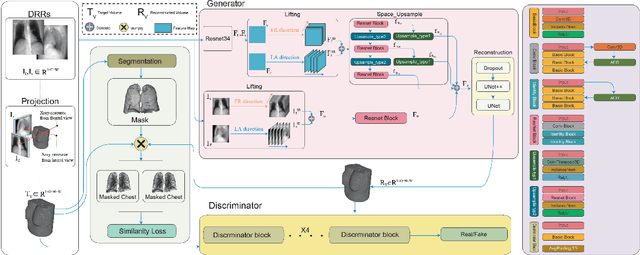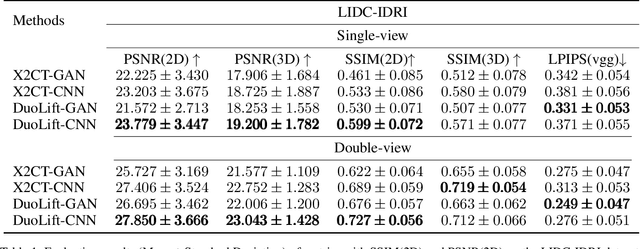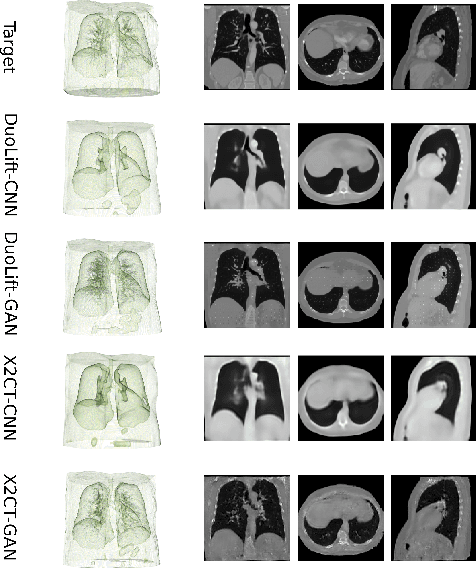Zhaoxi Zhang
Character-Level Perturbations Disrupt LLM Watermarks
Sep 11, 2025Abstract:Large Language Model (LLM) watermarking embeds detectable signals into generated text for copyright protection, misuse prevention, and content detection. While prior studies evaluate robustness using watermark removal attacks, these methods are often suboptimal, creating the misconception that effective removal requires large perturbations or powerful adversaries. To bridge the gap, we first formalize the system model for LLM watermark, and characterize two realistic threat models constrained on limited access to the watermark detector. We then analyze how different types of perturbation vary in their attack range, i.e., the number of tokens they can affect with a single edit. We observe that character-level perturbations (e.g., typos, swaps, deletions, homoglyphs) can influence multiple tokens simultaneously by disrupting the tokenization process. We demonstrate that character-level perturbations are significantly more effective for watermark removal under the most restrictive threat model. We further propose guided removal attacks based on the Genetic Algorithm (GA) that uses a reference detector for optimization. Under a practical threat model with limited black-box queries to the watermark detector, our method demonstrates strong removal performance. Experiments confirm the superiority of character-level perturbations and the effectiveness of the GA in removing watermarks under realistic constraints. Additionally, we argue there is an adversarial dilemma when considering potential defenses: any fixed defense can be bypassed by a suitable perturbation strategy. Motivated by this principle, we propose an adaptive compound character-level attack. Experimental results show that this approach can effectively defeat the defenses. Our findings highlight significant vulnerabilities in existing LLM watermark schemes and underline the urgency for the development of new robust mechanisms.
Technical Report of TeleChat2, TeleChat2.5 and T1
Jul 24, 2025Abstract:We introduce the latest series of TeleChat models: \textbf{TeleChat2}, \textbf{TeleChat2.5}, and \textbf{T1}, offering a significant upgrade over their predecessor, TeleChat. Despite minimal changes to the model architecture, the new series achieves substantial performance gains through enhanced training strategies in both pre-training and post-training stages. The series begins with \textbf{TeleChat2}, which undergoes pretraining on 10 trillion high-quality and diverse tokens. This is followed by Supervised Fine-Tuning (SFT) and Direct Preference Optimization (DPO) to further enhance its capabilities. \textbf{TeleChat2.5} and \textbf{T1} expand the pipeline by incorporating a continual pretraining phase with domain-specific datasets, combined with reinforcement learning (RL) to improve performance in code generation and mathematical reasoning tasks. The \textbf{T1} variant is designed for complex reasoning, supporting long Chain-of-Thought (CoT) reasoning and demonstrating substantial improvements in mathematics and coding. In contrast, \textbf{TeleChat2.5} prioritizes speed, delivering rapid inference. Both flagship models of \textbf{T1} and \textbf{TeleChat2.5} are dense Transformer-based architectures with 115B parameters, showcasing significant advancements in reasoning and general task performance compared to the original TeleChat. Notably, \textbf{T1-115B} outperform proprietary models such as OpenAI's o1-mini and GPT-4o. We publicly release \textbf{TeleChat2}, \textbf{TeleChat2.5} and \textbf{T1}, including post-trained versions with 35B and 115B parameters, to empower developers and researchers with state-of-the-art language models tailored for diverse applications.
When Better Features Mean Greater Risks: The Performance-Privacy Trade-Off in Contrastive Learning
Jun 06, 2025Abstract:With the rapid advancement of deep learning technology, pre-trained encoder models have demonstrated exceptional feature extraction capabilities, playing a pivotal role in the research and application of deep learning. However, their widespread use has raised significant concerns about the risk of training data privacy leakage. This paper systematically investigates the privacy threats posed by membership inference attacks (MIAs) targeting encoder models, focusing on contrastive learning frameworks. Through experimental analysis, we reveal the significant impact of model architecture complexity on membership privacy leakage: As more advanced encoder frameworks improve feature-extraction performance, they simultaneously exacerbate privacy-leakage risks. Furthermore, this paper proposes a novel membership inference attack method based on the p-norm of feature vectors, termed the Embedding Lp-Norm Likelihood Attack (LpLA). This method infers membership status, by leveraging the statistical distribution characteristics of the p-norm of feature vectors. Experimental results across multiple datasets and model architectures demonstrate that LpLA outperforms existing methods in attack performance and robustness, particularly under limited attack knowledge and query volumes. This study not only uncovers the potential risks of privacy leakage in contrastive learning frameworks, but also provides a practical basis for privacy protection research in encoder models. We hope that this work will draw greater attention to the privacy risks associated with self-supervised learning models and shed light on the importance of a balance between model utility and training data privacy. Our code is publicly available at: https://github.com/SeroneySun/LpLA_code.
Exploring Gradient-Guided Masked Language Model to Detect Textual Adversarial Attacks
Apr 08, 2025Abstract:Textual adversarial examples pose serious threats to the reliability of natural language processing systems. Recent studies suggest that adversarial examples tend to deviate from the underlying manifold of normal texts, whereas pre-trained masked language models can approximate the manifold of normal data. These findings inspire the exploration of masked language models for detecting textual adversarial attacks. We first introduce Masked Language Model-based Detection (MLMD), leveraging the mask and unmask operations of the masked language modeling (MLM) objective to induce the difference in manifold changes between normal and adversarial texts. Although MLMD achieves competitive detection performance, its exhaustive one-by-one masking strategy introduces significant computational overhead. Our posterior analysis reveals that a significant number of non-keywords in the input are not important for detection but consume resources. Building on this, we introduce Gradient-guided MLMD (GradMLMD), which leverages gradient information to identify and skip non-keywords during detection, significantly reducing resource consumption without compromising detection performance.
Not All Edges are Equally Robust: Evaluating the Robustness of Ranking-Based Federated Learning
Mar 12, 2025Abstract:Federated Ranking Learning (FRL) is a state-of-the-art FL framework that stands out for its communication efficiency and resilience to poisoning attacks. It diverges from the traditional FL framework in two ways: 1) it leverages discrete rankings instead of gradient updates, significantly reducing communication costs and limiting the potential space for malicious updates, and 2) it uses majority voting on the server side to establish the global ranking, ensuring that individual updates have minimal influence since each client contributes only a single vote. These features enhance the system's scalability and position FRL as a promising paradigm for FL training. However, our analysis reveals that FRL is not inherently robust, as certain edges are particularly vulnerable to poisoning attacks. Through a theoretical investigation, we prove the existence of these vulnerable edges and establish a lower bound and an upper bound for identifying them in each layer. Based on this finding, we introduce a novel local model poisoning attack against FRL, namely the Vulnerable Edge Manipulation (VEM) attack. The VEM attack focuses on identifying and perturbing the most vulnerable edges in each layer and leveraging an optimization-based approach to maximize the attack's impact. Through extensive experiments on benchmark datasets, we demonstrate that our attack achieves an overall 53.23% attack impact and is 3.7x more impactful than existing methods. Our findings highlight significant vulnerabilities in ranking-based FL systems and underline the urgency for the development of new robust FL frameworks.
DuoLift-GAN:Reconstructing CT from Single-view and Biplanar X-Rays with Generative Adversarial Networks
Nov 12, 2024



Abstract:Computed tomography (CT) provides highly detailed three-dimensional (3D) medical images but is costly, time-consuming, and often inaccessible in intraoperative settings (Organization et al. 2011). Recent advancements have explored reconstructing 3D chest volumes from sparse 2D X-rays, such as single-view or orthogonal double-view images. However, current models tend to process 2D images in a planar manner, prioritizing visual realism over structural accuracy. In this work, we introduce DuoLift Generative Adversarial Networks (DuoLift-GAN), a novel architecture with dual branches that independently elevate 2D images and their features into 3D representations. These 3D outputs are merged into a unified 3D feature map and decoded into a complete 3D chest volume, enabling richer 3D information capture. We also present a masked loss function that directs reconstruction towards critical anatomical regions, improving structural accuracy and visual quality. This paper demonstrates that DuoLift-GAN significantly enhances reconstruction accuracy while achieving superior visual realism compared to existing methods.
Transferring Knowledge from High-Quality to Low-Quality MRI for Adult Glioma Diagnosis
Oct 24, 2024Abstract:Glioma, a common and deadly brain tumor, requires early diagnosis for improved prognosis. However, low-quality Magnetic Resonance Imaging (MRI) technology in Sub-Saharan Africa (SSA) hinders accurate diagnosis. This paper presents our work in the BraTS Challenge on SSA Adult Glioma. We adopt the model from the BraTS-GLI 2021 winning solution and utilize it with three training strategies: (1) initially training on the BraTS-GLI 2021 dataset with fine-tuning on the BraTS-Africa dataset, (2) training solely on the BraTS-Africa dataset, and (3) training solely on the BraTS-Africa dataset with 2x super-resolution enhancement. Results show that initial training on the BraTS-GLI 2021 dataset followed by fine-tuning on the BraTS-Africa dataset has yielded the best results. This suggests the importance of high-quality datasets in providing prior knowledge during training. Our top-performing model achieves Dice scores of 0.882, 0.840, and 0.926, and Hausdorff Distance (95%) scores of 15.324, 37.518, and 13.971 for enhancing tumor, tumor core, and whole tumor, respectively, in the validation phase. In the final phase of the competition, our approach successfully secured second place overall, reflecting the strength and effectiveness of our model and training strategies. Our approach provides insights into improving glioma diagnosis in SSA, showing the potential of deep learning in resource-limited settings and the importance of transfer learning from high-quality datasets.
A Survey of Uncertainty Estimation in LLMs: Theory Meets Practice
Oct 20, 2024
Abstract:As large language models (LLMs) continue to evolve, understanding and quantifying the uncertainty in their predictions is critical for enhancing application credibility. However, the existing literature relevant to LLM uncertainty estimation often relies on heuristic approaches, lacking systematic classification of the methods. In this survey, we clarify the definitions of uncertainty and confidence, highlighting their distinctions and implications for model predictions. On this basis, we integrate theoretical perspectives, including Bayesian inference, information theory, and ensemble strategies, to categorize various classes of uncertainty estimation methods derived from heuristic approaches. Additionally, we address challenges that arise when applying these methods to LLMs. We also explore techniques for incorporating uncertainty into diverse applications, including out-of-distribution detection, data annotation, and question clarification. Our review provides insights into uncertainty estimation from both definitional and theoretical angles, contributing to a comprehensive understanding of this critical aspect in LLMs. We aim to inspire the development of more reliable and effective uncertainty estimation approaches for LLMs in real-world scenarios.
On the Effects of Modeling on the Sim-to-Real Transfer Gap in Twinning the POWDER Platform
Aug 26, 2024Abstract:Digital Twin (DT) technology is expected to play a pivotal role in NextG wireless systems. However, a key challenge remains in the evaluation of data-driven algorithms within DTs, particularly the transfer of learning from simulations to real-world environments. In this work, we investigate the sim-to-real gap in developing a digital twin for the NSF PAWR Platform, POWDER. We first develop a 3D model of the University of Utah campus, incorporating geographical measurements and all rooftop POWDER nodes. We then assess the accuracy of various path loss models used in training modeling and control policies, examining the impact of each model on sim-to-real link performance predictions. Finally, we discuss the lessons learned from model selection and simulation design, offering guidance for the implementation of DT-enabled wireless networks.
Cloud-Based Federation Framework and Prototype for Open, Scalable, and Shared Access to NextG and IoT Testbeds
Aug 26, 2024



Abstract:In this work, we present a new federation framework for UnionLabs, an innovative cloud-based resource-sharing infrastructure designed for next-generation (NextG) and Internet of Things (IoT) over-the-air (OTA) experiments. The framework aims to reduce the federation complexity for testbeds developers by automating tedious backend operations, thereby providing scalable federation and remote access to various wireless testbeds. We first describe the key components of the new federation framework, including the Systems Manager Integration Engine (SMIE), the Automated Script Generator (ASG), and the Database Context Manager (DCM). We then prototype and deploy the new Federation Plane on the Amazon Web Services (AWS) public cloud, demonstrating its effectiveness by federating two wireless testbeds: i) UB NeXT, a 5G-and-beyond (5G+) testbed at the University at Buffalo, and ii) UT IoT, an IoT testbed at the University of Utah. Through this work we aim to initiate a grassroots campaign to democratize access to wireless research testbeds with heterogeneous hardware resources and network environment, and accelerate the establishment of a mature, open experimental ecosystem for the wireless community. The API of the new Federation Plane will be released to the community after internal testing is completed.
 Add to Chrome
Add to Chrome Add to Firefox
Add to Firefox Add to Edge
Add to Edge